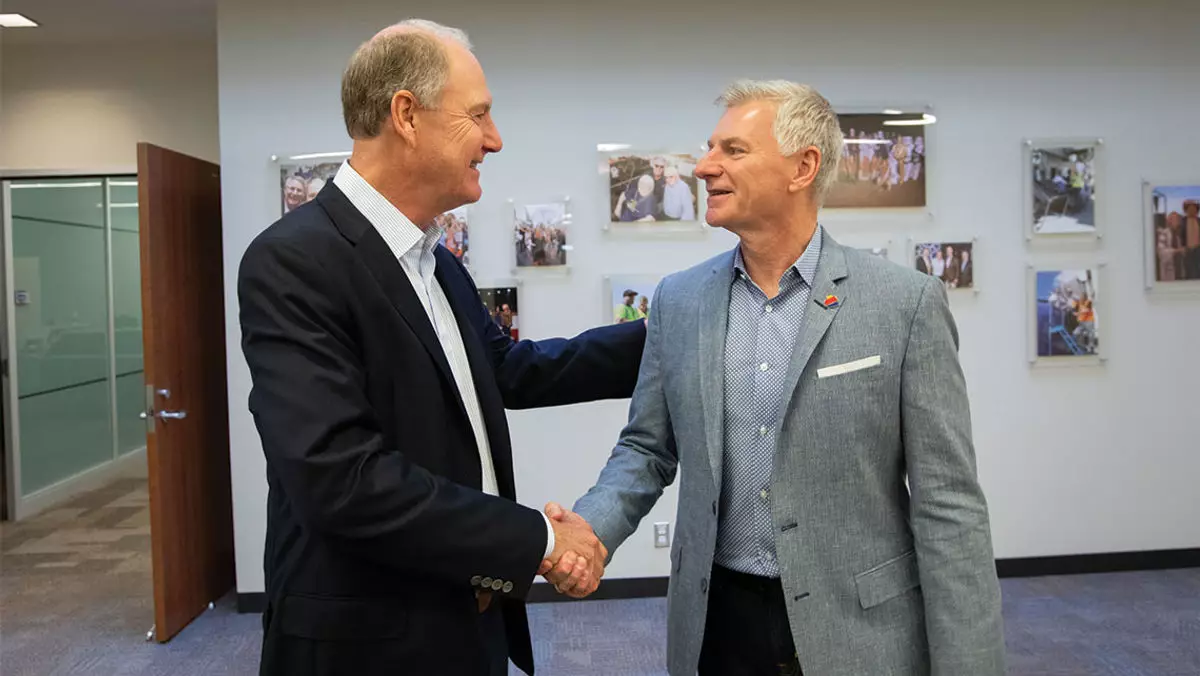In the fast-paced world of aviation, leadership changes often signify more than just a shuffle in human resources; they embody a company’s response to industry pressures and shareholder expectations. Southwest Airlines, a prominent player in the airline industry, is currently under the spotlight as it navigates its forthcoming board overhaul. This shift comes in the wake of mounting pressure from activist investors and reflects a profound acknowledgment of the need for transformative change in its governance structure.
At the core of Southwest Airlines’ decision to revamp its board is the ever-increasing scrutiny from Elliott Investment Management, an activist firm that has acquired an 11% stake in the airline. This significant ownership has not only granted Elliott a voice but also raised the stakes for the company. With a board meeting approaching in November, six of the current fifteen board members are scheduled to step down, marking a pivotal moment for the airline. The impending exit of longtime chairman Gary Kelly—who has played a significant role in shaping the airline’s trajectory since he took the helm in 2004—signals an end to an era characterized by steady growth but now challenges, as the company finds itself struggling against a tide of evolving consumer expectations and declining margins.
Elliott’s persistent calls for Kelly’s resignation and other leadership changes underscore a clear message: the company must adapt or risk stagnation. The firm has been critical of Southwest’s current approach, asserting that its leaders have been lethargic in responding to shifts in the market, which has impacted both operational efficiency and profitability. This situation reflects a broader trend in corporate governance where activist investors are not just observers but active participants in demanding accountability and direction.
The changes on the board of directors are not merely cosmetic; they represent a strategic pivot toward a fresh vision for Southwest Airlines. The announcement from Kelly indicates that the company plans to bring aboard four new members, with a significant portion potentially sourced from a slate of candidates proposed by Elliott. This proactive approach is an attempt to reassure shareholders that their voices are being heard and that the company is committed to evolving.
In a letter addressed to shareholders, Kelly openly acknowledged the need for significant changes, a rare admission from an executive of his tenure. By outlining a willingness to embrace new perspectives, the current leadership appears to be positioning itself as receptive to innovation while maintaining continuity with its legacy of operational excellence. The decision to reduce the board from fifteen to twelve members, coupled with an effort to decrease the average tenure of board members from 7.3 years to 2.5 years, is a strategic move towards rejuvenation.
As the landscape of the airline industry grows increasingly competitive, the pressure mounts for Southwest to enhance its service offerings while improving profitability. Analysts note that the new candidates emerging for board consideration are notably experienced, bringing with them insights garnered from their time at other airlines, such as Virgin America and Air Canada. This diversification of experience could help Southwest tap into new strategies and paradigms that align more closely with contemporary consumer demands.
However, the challenge ahead is considerable. As the board prepares to welcome new leadership, the tension between existing management and investor expectations remains palpable. Elliott’s criticism of CEO Bob Jordan further amplifies this issue, creating an atmosphere of uncertainty regarding his future at the helm of the airline. Jordan has been praised for his extensive experience—36 years with the company—but whether that experience translates into effective leadership amid transformative change is still in question.
Looking ahead, Southwest Airlines must balance the urgency for change with the need for stability. Integrating new board members while maintaining the momentum built over decades will be key to the airline’s strategy. The shift in the boardroom, combined with changes in operational tactics, such as the introduction of extra-legroom seating and a move from open seating to assigned seating, illustrates Southwest’s commitment to evolving its customer experience.
In this dynamic and often turbulent industry, not adapting is not an option. Southwest Airlines stands at a crossroads, one where leadership transitions may very well define its future. As it steps into this new chapter, the ongoing dialogue with shareholders like Elliott will be instrumental in charting a new course that embraces innovation while respecting the company’s foundational values. Ultimately, the success of these efforts will hinge on the ability of the company’s leadership to foster a culture of responsiveness and adaptability in the face of changing times.

